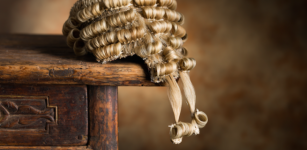Wigs and Robes in the Courtroom

In Australia there are limited people outside the legal profession who wear professional attire rooted in standards from the 1600s.
The Australian legal system is steeped in history and tradition, with cases decided centuries ago still forming part of our common law. But while the criminal justice system is undeniably built on historical foundations, do we really need to hold on to the outfits as well?
The history of the wig and robe
Wigs and robes were introduced in England to distinguish legal professionals from the rest of society. By the 1600s, their use became standardised, and this tradition carried over to Australia during colonisation. Although concerns were raised about the practicality of heavy robes in Australia’s warmer climate, tradition ultimately prevailed.
Even today most courts remain firmly rooted in these customs, seemingly untouched by the evolving fashion trends seen in other professions and society as a whole.
Throughout history, there have been moments when individuals within the legal profession challenged these rigid norms. In 1987, a female barrister made waves by wearing pants to the Victorian Supreme Court, defying the strict dress code and making headlines. A few years later, in 1993, lawyer Sye MacGregor stirred controversy by showing up to court in a skirt above the knee and polka dot stockings. The outfit had startled the presiding Magistrate that he not only removed her from the courtroom but also threatened to leave himself to “recover” from the shock.
Are wigs and robes still required in Australian Courts?
The dress code for legal professionals in Australia is a patchwork of rules that can vary significantly between states, courts, and even individual courtrooms.
For instance, in the High Court Judges wear robes but have not worn wigs since 1988. However, barristers appearing before them are still required to wear wigs, robes, jackets, and a jabot—a type of collar with two strips of fabric hanging down the front.
Contrast this with Local Courts in New South Wales, such as the Downing Centre Local Court or Parramatta Local Court, where wigs and robes are absent altogether. Magistrates don’t wear them, and barristers appearing in these courts aren’t required to either.
The Family Court which had been established in the 1970s, was intentionally designed to be less formal. While judges initially didn’t wear wigs or robes, robes were introduced in the 1980s for certain types of appearances and remain in limited use today.
Are they still necessary?
In many modern countries, such as Canada, the United States, and majority of Europe, wigs and robes have long been absent — or were never part of the traditional attire for barristers and judges. Even countries that once followed similar customs, like Ireland and New Zealand, have since abolished the requirement altogether.
Supporters of these traditions argue that formal attire provides a sense of respect and gravitas to court proceedings, helping to promote decorum and maintain order.
However, critics suggest that the dress code can make legal professionals seem disconnected from everyday people and may leave those unfamiliar with the system feeling intimidated or inferior. Others take a more lighthearted view, calling the outfits outright comical and making comparisons of the red robes worn in the Supreme Court to Santa Claus’s wardrobe.
Public perceptions
Interestingly, a 2003 survey by the Law Institute of Victoria, which polled 360 members of the public, revealed that 54% believed wigs and robes should still be worn in court. This result surprised Law Institute President Bill O’Shea, who had anticipated stronger support for modernisation. Reflecting on the findings, Mr. O’Shea remarked:
“The legal profession has been the butt of many jokes over the years about wearing the 18th century dress in court… But when they get the chance to have a say, the public seems to cling onto tradition.”
The survey highlighted that many respondents appreciated how judges and barristers’ attire made them easily identifiable in the courtroom. However, a significant portion of participants viewed the clothing as irrelevant, unnecessary, or even counterproductive, citing its association with outdated class distinctions.
Those advocating for modernisation argued that requiring judges and barristers to wear attire so clearly out of step with the times could foster public contempt and erode respect for the judiciary.






